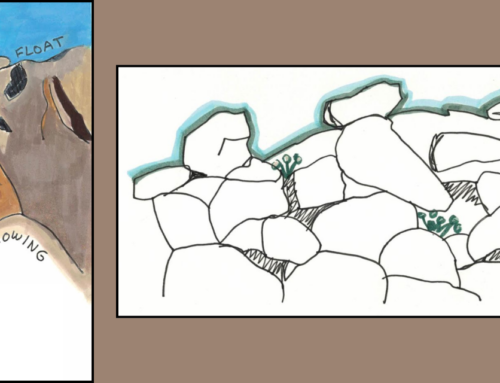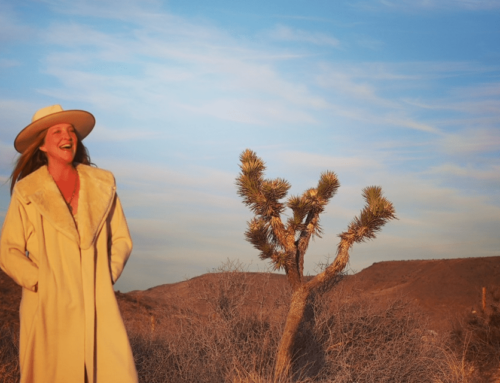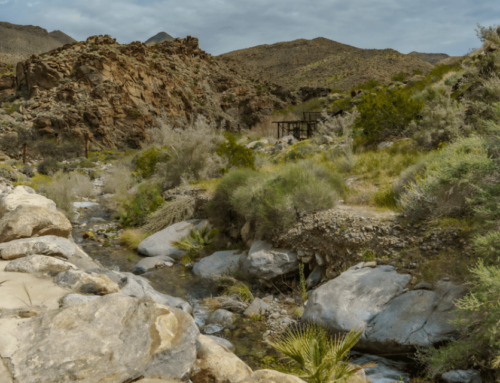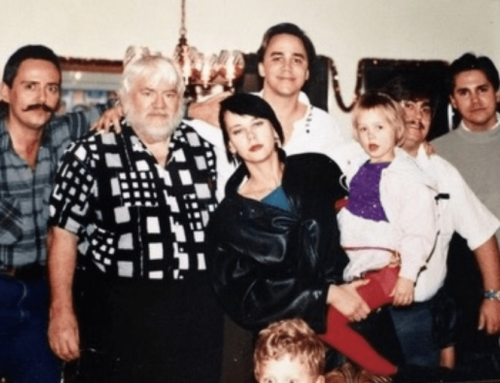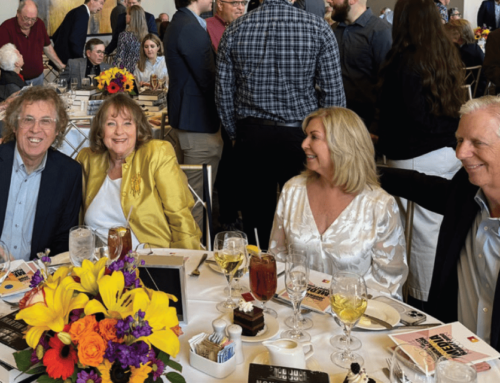
The outstanding LEGACY of Kim Stringfellow
By Lisa Morgan
Kim Stringfellow is a multifaceted storyteller, her own voice is determinedly absent for the sake of fearless honesty, as she writes the underrepresented into posterity. A distinctive, internationally known, research-based artist, she utilizes cultural geography, public practice, writing, photography, audio, video, installation, mapping, and community engagement to study how the landscapes of some of the American West’s most barren provinces have socially and culturally developed. Forgotten stories within the cultural topography of some of the most seemingly desolate places might be forever lost in obscurity, or worse, bent by misinformation, without her strong-willed curiosity, appetite for the truth, and creative mind.

Photo by Stella Kalinina
Through her art, Stringfellow translates years of research into comprehensible, eugenically engaging art on multiple platforms. One could easily imagine her walking into the not so ancient ruins of the desertscape, quietly divining stories from abandoned relics and broken pieces, then transforming them into impactful echoes of the past.
While her educational accomplishments and artistic accolades create an intimidating list reflective of her extensive work and personal investment in art and education, Stringfellow is an easy soul to talk to. The first in her family to go to college, her earliest role models equipped her well. “My parents raised me in a very non-gendered way. I wasn’t forced into a mold. I think that makes a big difference. When you’re not forced into a mold, you can be and do anything. My mom may have expressed some disappointment when I quit high school sports, and my dad had some concerns about a career in art, wanting me to make sure that I could make a living somehow, but otherwise, I was left to do what I wanted. I shy away from being pigeonholed and am pretty head strong. We shouldn’t have to categorize ourselves. I’m an artist because that’s all I’ve ever been, but I am a lot more than that too.”
Her voice lifts when she boasts about her parents who have always worked. Now in their 80s, they each own their own stores next door to each other – mom owns a gift store, and her 84 year-young father runs an art framing store when he’s not snow skiing.
One of her greatest outside influences is 1968 Guggenheim Fellowship winner, Lucy Lippard. Lippard is an American writer, art critic, activist, and curator. Lippard was an early champion of feminist art, and the author of 21 books on contemporary art, including Stringfellow’s favorite, Lure of the Local, a 1997 study of the sense of place. Stringfellow also sites Rebecca Solnit, who she describes as “an internationally known writer, activist, and great thinker.” Her dog is named after famed photographer, fashion model, and war correspondent, Lee Miller.
Driven by a desire to connect and dwell with an artist community, Stringfellow calls Joshua Tree home. It was a long, fascinating road to get here.
“I was born in the Bay Area in California, but I grew up in Seattle Washington,” she shared. “I had a great art program in high school with a great teacher. I would say I was just kind of an average student until art changed that for me.”

Jackrabbit Homestead Project, Kim Stringfellow.
Stringfellow found herself influenced by the Seattle music scene of the 80s, unwittingly finding herself on the ground floor of a young, developing grunge era. “It was an interesting time in the 80s. None of the bands had made it yet, but one of the first shows I saw was PIL – that was an amazing show. I casually knew Chris Cornell of Soundgarden as the young, handsome, quiet guy who worked at the vintage clothing store. My friends and I heard that his band was playing one Sunday afternoon. I remember it well. There weren’t a lot of people there, and I remember seeing Chris writhing on the floor singing with that voice, and we were all blown away. We didn’t want anything to do with metal, but we thought this was really kind of cool. This was our world, and it played a big part in developing my activism.”
Rock and roll experiences aside (like seeing a young, unknown Kurt Cobain and band, Nirvana, perform in a small venue to a sparce crowd), Stringfellow worked continuously hard and took calculated risks resulting in an esteemed educational career and impressive body of work. A Professor Emeritus at San Diego State University’s School of Art + Design, she received her MFA in Art and Technology from the School of the Art Institute of Chicago in 2000. Claremont Graduate University awarded her an honorary doctoral degree in 2018.

Jackrabbit Homestead Project, Kim Stringfellow.
A collection of her photographs and books are included at Yale University’s Beinecke Rare Book and Manuscript Library Western Americana Collection; The Comer Collection of Photography at UT Dallas; UC Riverside’s Culver Center for the Arts; UC Riverside Special Collections; UC Irvine Special Collections; LACMA’s Blach Art Research Library; The Altered Landscape Collection at the Nevada Museum of Art; and The Margulies Collection at the WAREhOUSE in Miami, FL.
Her projects have been commissioned and funded by California Humanities, Creative Work Fund, Graham Foundation for Advanced Studies in the Fine Arts, Los Angeles County Arts Commission, Seattle Arts Commission, and the prestigious Desert X.
Stringfellows artistic research DNA is well captured in her Desert X selected project, Jackrabbit Homestead: Tracing the Small Tract Act in the Southern California Landscape, 1938 – 2008. The project consists of a published book, an exhibit, a site-specific installation, and a downloadable car audio tour. Jackrabbit Homestead explores the stories of the Small Tract Act here in the Morongo Basin, not far from the Joshua Tree National Park. Accounts from this underrepresented piece of local history are now told through the voices of residents, historians, and area artists—many of whom reside in these reclaimed historic cabins. Stringfellow built and outfitted a 112-square-foot jackrabbit homestead inspired by the writings of Catherine Venn Peterson. Peterson wrote a six-part series detailing her mid-century Small Tract homesteading experience for Desert Magazine during the 1950s, when this highly popular “baby homestead” movement was just getting started. An audio soundscape brings Ms. Venn to life (voiced by Claire M. Campbell, in collaboration with Georgia-based musician/artist/author Jim White) as observers peer through windows and take a mental tour back in time.

Matthew Leivas Sr., Salt Song Singer, Old Woman Mountains Preserve, CA. Photo by Kim Stringfellow.
She is also the author of Greetings from the Salton Sea: Folly and Intervention in the Southern California Landscape, 1905–2005, a fascinating, well researched, published photo book, website, and installation project documenting the natural and built environment of the Salton Sea. A 2023 limited third collector’s edition has been re-edited and updated, and is available on her website:
Excerpt: “At one point, as local legend has it, Davis imported a half dozen sea lions, which he released into Salton Sea. They were unpopular with the local farmers who blamed them for some missing pigs and demanded that they be destroyed. Although the farmers did not hunt down the sea lions, in the end, the unfortunate beasts did not survive.”
The Mojave Project Reader Series, an ongoing collection of stories and photos such as Bringing Creation Back Together Again: The Salt Songs of the Nuwuvi wherein Stringfellow gives photographic and journalistic account of respected elder and Salt Singer, Matt Leivas, Sr.
Excerpt: “It is no surprise that Matt Leivas, Sr. is a ram. By this I mean he is a Na, a direct descendant of the Chemehuevi Mountain Sheep Clan. An all-star high school linebacker, Leivas’ formidable stature suggests that of Ovis canadensis nelsoni, but it could be said that his serene demeanor resembles one as well. As if to confirm this fact, in July 2016, while singing traditional songs during a healing retreat at Painted Rock, a sacred ancestral site within the Old Woman Mountains Preserve, a mature ram appeared out of nowhere drawn by Leivas’ enduring song. Leivas had not noticed this ungulate observing him as it loomed thirty feet above. After he finished singing, the lone ram had moved on.”
Stringfellow’s research and resulting art reflecting the human-driven transformation of the American West shows no sign of waning. Her examinations continue to reveal the ecological repercussions of human presence and occupation within these spaces. She hopes to foster complex discussions about interrelated issues, while courageously exposing human values and policy agendas that form collective understanding of the American West.
For these reasons and so many more, Kim Stringfellow was presented with the Outstanding Legacy Honor at the 2023 Joshuas Honors Gala.

Jackrabbit Homestead Project, Kim Stringfellow.





